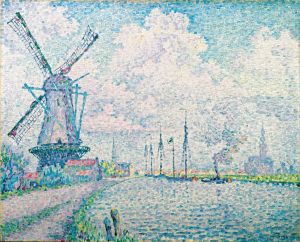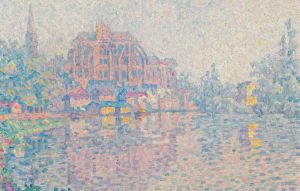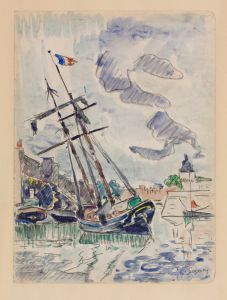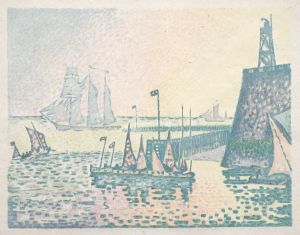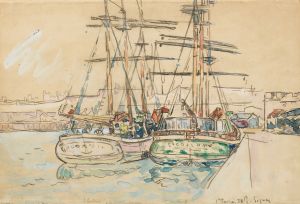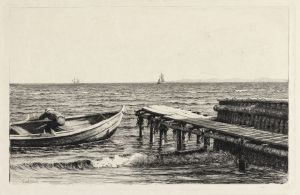
Marseille
A hand-painted replica of Paul Signac’s masterpiece Marseille, meticulously crafted by professional artists to capture the true essence of the original. Each piece is created with museum-quality canvas and rare mineral pigments, carefully painted by experienced artists with delicate brushstrokes and rich, layered colors to perfectly recreate the texture of the original artwork. Unlike machine-printed reproductions, this hand-painted version brings the painting to life, infused with the artist’s emotions and skill in every stroke. Whether for personal collection or home decoration, it instantly elevates the artistic atmosphere of any space.
Paul Signac's painting "Marseille" is a notable work by the French Neo-Impressionist artist, who is renowned for his development and use of the Pointillism technique alongside Georges Seurat. Signac was a pivotal figure in the Post-Impressionist movement, and his works are celebrated for their vibrant color schemes and meticulous technique.
"Marseille" was painted in 1906, during a period when Signac was extensively traveling and capturing the essence of various French ports and coastal cities. This painting is part of a series where Signac explored the beauty and dynamism of maritime life, a theme that resonated deeply with him due to his passion for sailing and the sea.
The painting depicts the bustling port of Marseille, a city located on the Mediterranean coast of France. Signac's portrayal of Marseille is characterized by his signature Pointillist style, where small, distinct dots of color are applied in patterns to form an image. This technique allows the viewer's eye to blend the colors optically, creating a luminous effect that captures the vibrant atmosphere of the port.
In "Marseille," Signac uses a bright and varied palette to convey the lively and energetic environment of the harbor. The composition is filled with boats, the sea, and the architecture of the city, all rendered in a harmonious blend of colors. The painting reflects Signac's interest in capturing the interplay of light and color, as well as his fascination with the modernity and movement of urban life.
Signac's choice of Marseille as a subject is significant, as the city was one of the largest and most important ports in France at the time. It was a hub of commerce and culture, and its diverse population and vibrant atmosphere made it an ideal subject for Signac's exploration of modern life through art.
Throughout his career, Signac was influenced by the scientific theories of color and perception, which he applied to his work to achieve greater luminosity and vibrancy. His approach to painting was methodical and deliberate, often involving careful planning and execution to achieve the desired effect.
"Marseille" is housed in the Musée d'Orsay in Paris, which holds an extensive collection of works by Signac and other artists of the Neo-Impressionist movement. The painting is an excellent example of Signac's mature style and his ability to capture the essence of a place through his innovative use of color and technique.
Signac's work, including "Marseille," has had a lasting impact on the art world, influencing subsequent generations of artists and contributing to the development of modern art. His dedication to exploring the possibilities of color and form has cemented his place as a key figure in the history of art.





